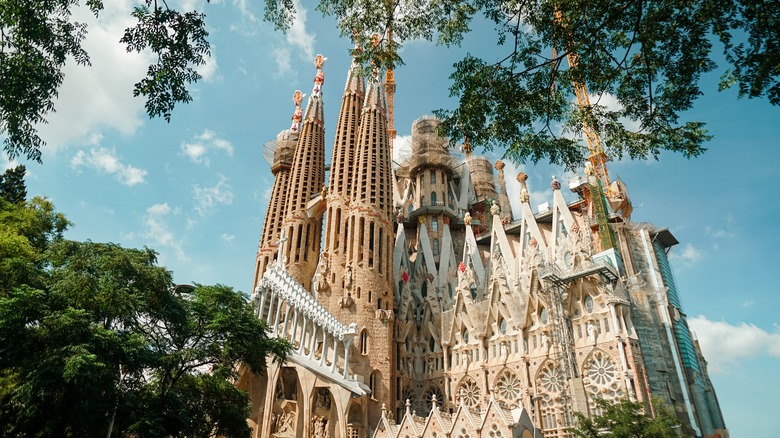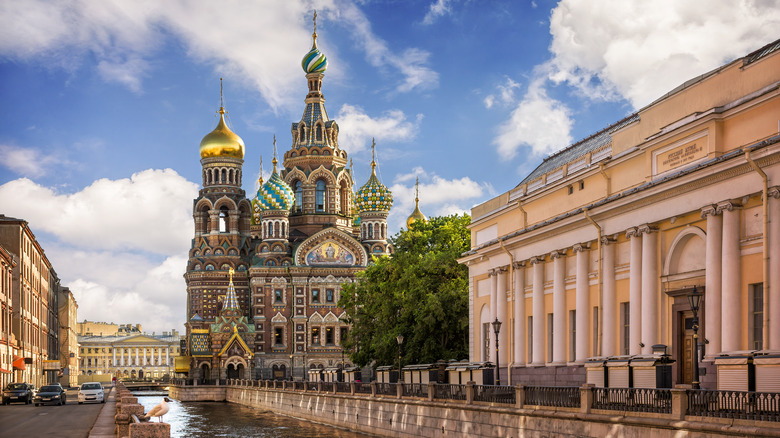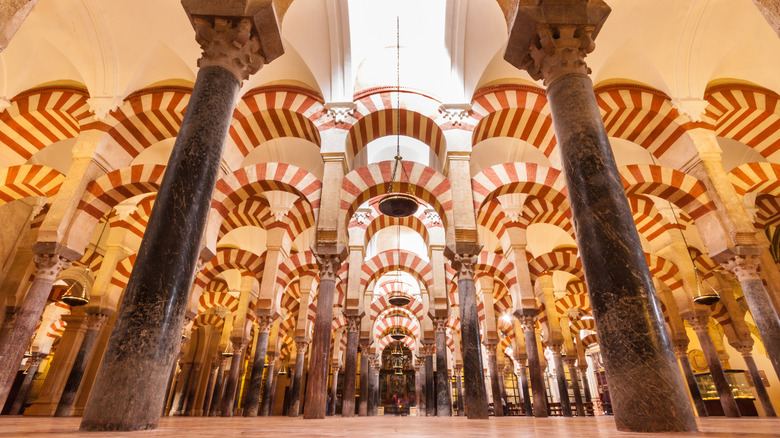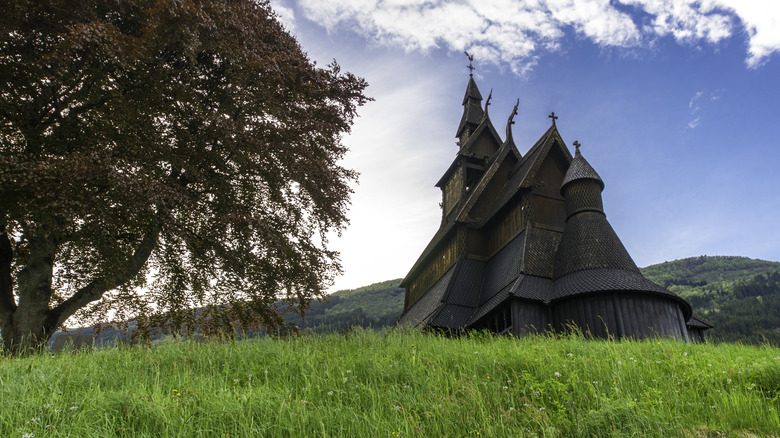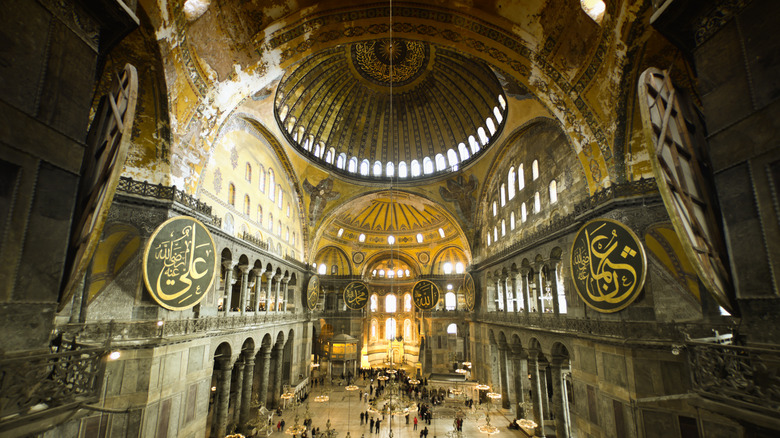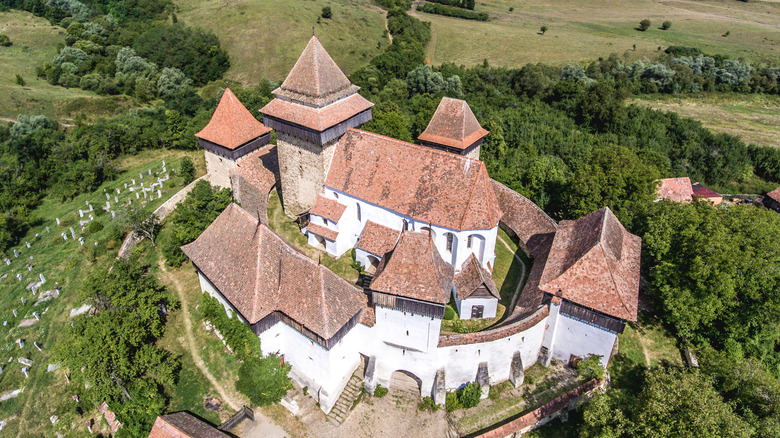Don't Skip Rick Steves' Favorite Houses Of Worship On Your Trip To Europe
Europe is home to some of the most awe-inspiring places of worship in the world. Among these, certain landmarks stand out for their architectural brilliance, historical significance, and the stories they tell. Travel guru Rick Steves, known for his in-depth knowledge and passion for European travels, has highlighted a list of must-visit sacred sites. From the spires of Gaudí's Sagrada Família to the ancient walls of Hagia Sophia, each offers a unique window into the spirit of its city.
One of Rick Steves' favorite house of worship is located in Barcelona, Spain. You guessed it — Antoni Gaudí's magnum opus, the Sagrada Família. Still under construction more than a century after it began in 1883, the UNESCO World Heritage Site basilica combines Gothic and Art Nouveau forms with unprecedented genius. Its towers soar towards the heavens, intricate Nativity façades visualize Christian stories, and columns branch out like trees to hold up the vast, starlit ceiling — completion is expected for 2026.
Visitors should purchase tickets on the Sagrada Família website to avoid long queues, with options for basic entry ($28), guided tours ($32), and tower access ($39 or $43 with a guided tour). It's easily accessible by metro (Sagrada Familia Station on Lines 2 and 5), on foot, and hop-on hop-off tourist buses. The best time to visit is in the shoulder seasons (April-May and September-October), and early weekday mornings or late afternoons. Attending a mass at the Sagrada Família is a sublime experience.
Church on Spilled Blood: St. Petersburg, Russia
With its riot of colors and nine onion domes, the Church on Spilled Blood looks like something out of a fairytale. Located along the Griboedov Canal in St. Petersburg, Russia, it's one of Rick Steves' favorite in Europe. Erected on the site where Tsar Alexander II was assassinated in 1881, the church is a masterpiece of Russian medieval architecture and contrasts the other architectural styles that dominate St. Petersburg. Constructed from 1883 to 1907, it was commissioned by Alexander III as a tribute to his father.
Its exterior, adorned with elaborate tile work and biblical scenes, captures the imagination. However, the interior is where the church's true splendor lies. Over 75,347 square feet of mosaics — one of the largest collections in Europe — depict religious narratives with stunning vibrancy and detail, covering walls and ceilings in a kaleidoscope of color. Today, the Church on Spilled Blood functions more as a museum than a place of worship and is a must-visit for anyone traveling to St. Petersburg.
The church is open from 10:30 a.m. to 10:30 p.m. during the summer every day except Wednesday (10:30 a.m. to 6 p.m. during the rest of the year). It is accessible by public transport — the closest metro station is Gostiny Dvor, with Nevskiy Prospekt Station also nearby. The entrance costs 250 rubles ($3) for adults, 50 rubles (50 cents) for children, and 400 rubles ($4.50) for evenings in the summer. An audio guide is available for an additional 100 rubles ($1).
Mezquita: Córdoba, Spain
Rick Steves considers the Mezquita of Córdoba as the centerpiece of the Spanish city. The Mezquita's construction began in the year 784 under the Umayyad ruler Abd al-Rahman I. It has undergone many evolutions: In 1236, the Mezquita was converted into a Roman Catholic cathedral and a Renaissance cathedral nave was constructed in the middle of the structure in the 16th century, creating a church within a mosque.
UNESCO designated it a World Heritage Site in 1984. The Mezquita represents a blend of Moorish, Gothic, Islamic, and Renaissance architectural styles. It's especially renowned for its striking columns and double arches, which create an infinity effect. Over 850 columns made from jasper, onyx, granite, and marble support the roof. The mihrab (prayer niche) and maqsura (an area reserved for the ruler) are among the most beautifully decorated, featuring golden Byzantine mosaics.
At its height, the mosque could accommodate up to 20,000 worshippers. Today, it is one of Spain's most visited monuments, attracting over 1 million tourists per year. The Mezquita is open from 10 a.m. to 6 p.m., with a special night program called The Soul of Córdoba. General admission tickets cost $14, the night program is $21.50, and $3 to visit the bell tower. Tickets can be purchased online. The Andalusian town of Córdoba in itself is also one of those underrated destinations in Spain to add to your bucket list.
Hopperstad Stave Church: Vik, Norway
Tucked away in the scenic fjords of Norway, the Hopperstad Stave Church is a remarkable survivor of the Viking Age. Rick Steves highly recommends a visit here as part of a Norway trip. It was built around 1130, making it one of the oldest surviving stave churches in Norway (there are only 28 remaining) and the world. By the late 19th century, Hopperstad Stave Church had fallen into disrepair. It underwent extensive restoration in the late 19th century by architect Peter Blix.
The church is a prime example of traditional Norwegian stave church architecture, characterized by its wooden construction, intricate carvings, and dragonhead decorations (reminiscent of Viking longships, for all those Norse mythology fans!). The church is entirely made of a fir called "malmfuru," with the exception of the foundation (stone) and the doors and locks (metal) — even the nails are wooden. One of its most notable features is the peaked, steep, stacked roofs reaching toward the heavens. The interior features elaborate wood carvings of dragon and vine motifs, and canopy paintings depict Biblical stories.
Although it is no longer regularly used for church services, Hopperstad Stave Church remains a site of pilgrimage, attracting visitors from around the world interested in Norse history, Christianity, and architecture. The church's operating season lasts from the beginning of June to the end of September. It is open from 9 a.m. to 4 p.m. Tickets to enter the church cost $7.50 for adults and $5.50 for children.
Hagia Sophia: Istanbul, Turkey
Its name means "Holy Wisdom" in Greek. According to Rick Steves, the Hagia Sophia provides exceptional insight into what was once Constantinople, now, Istanbul, Turkey. Originally constructed as a Christian cathedral in 537 AD, in 1453, following the Ottoman conquest, Hagia Sophia was converted into a mosque. It remained a mosque until 1935, when it was secularized and turned into a museum by the Republic of Turkey. However, in 2020, Hagia Sophia was reconverted into a mosque by a Turkish court ruling.
Hagia Sophia is renowned for its massive dome measuring about 102 feet in diameter. The building houses elements of both Christianity and Islam, including Christian mosaics alongside Islamic calligraphy. Many Byzantine mosaics were plastered over, but these have been gradually restored and uncovered. Other points of interest include the Emperor's Gate, the Wish Column (said to contain Mother Mary's tears), the Mihrab, and the Coronation Spot, where Roman emperors were coronated. Hagia Sophia was designated a UNESCO World Heritage Site in 1985.
A visit here is one of the best ways to see Istanbul's stunning architecture. To enter the Hagia Sophia, modest clothing must be worn (including head covering for women), and shoes are to be taken off. It is open throughout the year, from 9 a.m. to 7:30 p.m. The mosque is closed from 12:30 p.m. to 2:30 p.m. for non-practicing visitors during Friday Prayers. Tourists visiting for cultural reasons have to purchase a $27 entry ticket, available only at the on-site ticket booth.
Viscri Church: Transylvania, Romania
Viscri Church, nestled in the village of Viscri in Romania, is one of the best places to stop on a road trip through Transylvania. Rick Steves strongly recommends venturing into Romania's countryside. This UNESCO World Heritage Site offers a unique glimpse into the region's medieval past and the lifestyle of the Transylvanian Saxons. The origins of Viscri Church date back to the 12th century when Saxon colonists overtook an existing Szecklers-built chapel.
Like many churches in Transylvania, Viscri Church was fortified to protect the community from Ottoman and Tartar invasions. It features defensive walls, towers, and bastions — a stronghold where villagers could retreat during attacks. The church underwent multiple stages of construction, first in the 14th century and later in the 16th century. In the year 1525, the church saw significant alterations, including the addition of the impressive fortified tower, which serves as a bell tower and lookout. Inside, the church houses an array of historical artifacts, including a beautifully preserved altar and a 19th-century painting as its centerpiece — "The Blessing of the Children," by J. Paukratz.
Viscri has become a model for rural tourism in Romania, attracting visitors with its tranquil setting, traditional accommodations, and the opportunity to experience the Saxon way of life. The church and on-site museum are accessible to visitors, offering guided tours that highlight its history and architecture. It is open every day from 10 a.m. to 1 p.m. and from 3 p.m. to 6 p.m. It costs $1 to enter.
